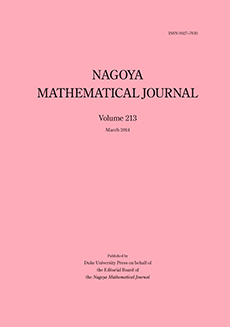Abstract
A locally projective amalgam is formed by the stabilizer $G(x)$ of a vertex $x$ and the global stabilizer $G\{x, y\}$ of an edge (containing $x$) in a group $G$, acting faithfully and locally finitely on a connected graph $\Gamma$ of valency $2^{n}-1$ so that (i) the action is $2$-arc-transitive; (ii) the subconstituent $G(x)^{\Gamma(x)}$ is the linear group $SL_{n}(2) \cong L_{n}(2)$ in its natural doubly transitive action and (iii) $[t, G\{x, y\}] \le O_{2}(G(x) \cap G\{x, y\})$ for some $t \in G\{x, y\} \setminus G(x)$. D. Ž. Djokovic and G. L. Miller [DM80], used the classical Tutte's theorem [Tu47], to show that there are seven locally projective amalgams for $n = 2$. Here we use the most difficult and interesting case of Trofimov's theorem [Tr01] to extend the classification to the case $n \ge 3$. We show that besides two infinite series of locally projective amalgams (embedded into the groups $AGL_{n}(2)$ and $O_{2n}^{+}(2)$) there are exactly twelve exceptional ones. Some of the exceptional amalgams are embedded into sporadic simple groups $M_{22}$, $M_{23}$, $Co_{2}$, $J_{4}$ and $BM$. For each of the exceptional amalgam $n = 3$, $4$ or $5$.
Citation
A. A. Ivanov. S. V. Shpectorov. "Amalgams determined by locally projective actions." Nagoya Math. J. 176 19 - 98, 2004.
Information




